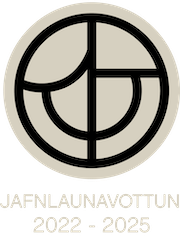Íslenskt unglingamál: Rannsókn á samskiptaaðferðum í raungögnum - verkefni lokið
Fréttatilkynning verkefnisstjóra
Meginmarkmið rannsóknarverkefnisins Íslenskt unglingamál: rannsókn á samskiptaaðferðum í raungögnum var að safna gögnum og kortleggja helstu einkenni málnotkunar íslenskra unglinga, ekki síst með tilliti til aukinna áhrifa ensku á íslenskt samfélag. Efniviðurinn var tvískiptur: annars vegar skrifleg slanguryrðakönnun sem lögð var fyrir um 1000 nemendur víðsvegar um landið, og hins vegar hljóðupptökur af samtölum nemenda í skólaumhverfi (22 klst.) og í frítíma (6 klst.).
Skriflega könnunin leiddi í ljós að hlutfall ensks orðaforða í slangri íslenskra ungmenna hefur tvöfaldast á síðastliðnum tveimur áratugum og að þróun stafrænnar tækni hefur haft merkjanleg áhrif á ritun orða. Algengt var að séríslenskir stafir féllu brott í svörum og að nemendur léku sér með tákn á nýstárlegan hátt. Hvað hljóðupptökurnar varðar sýndi rannsóknin að mikill munur getur verið á samtölum og að í skólaviðtölum séu áhrif ensku mun minni en í óformlegum samtölum. Áhrifin voru hins vegar mikil í samtölum vina sem voru að spila tölvuleiki en þá var nær tíunda hvert orð enskt. Oft skýrist notkun enskra orða af því sem er að gerast í sjálfum tölvuheiminum en einnig var þar að finna töluvert af upphrópunum, ávörpum og blótsyrðum á ensku. Að lokum er vert að geta þess að niðurstöður rannsóknarinnar sýna að einkenni íslensks unglingamáls eru sambærileg eða þau sömu og hjá unglingum í öðrum löndum. Oft er um sömu frasa og orð að ræða sem sótt eru til enskrar dægurmenningar, enda er unglingamenning í eðli sínu alþjóðlegt fyrirbæri. Með orðavali og samtalsstíl gefa ungir Íslendingar til kynna að þeir líti á sig sem alþjóðlegar nútímamanneskjur sem sækja hugmyndir og innblástur þvert á landamæri.
English:
The main goal of the research project Icelandic youth language: an empirical study of communicative resources was to collect data on Icelandic youth language and to map its main characteristics, particularly the increasing influence of English. The data can be divided into two main categories: 1) a written survey of slang vocabulary that was sent to about 1000 students in different parts of Iceland, and, 2) audio recordings of student group interviews recorded in a classroom (22 h) along with private conversations between peers that took place at home (6 h). The results of the written survey show that the impact of English on slang vocabulary has doubled during the last two decades, and that the development of digital technology has had a noticeable effect on how young people express themselves in informal writing. Often, special characters were omitted in responses, and it was common to see symbols used in innovative and playful ways. With regard to the audio recordings, the study showed that there can be great differences between conversations concerning the influence of English. In the school interviews, the influence of English was much less evident than in private conversations. The influence of English was particularly strong in conversations between friends playing video games. Almost 10% of the vocabulary used in this context was taken directly from English. Often, English words were borrowed directly from the game being played, that is they were words that appeared on the screen, but exclamations, address terms and swear words were also common. Finally, it is worth noting that the overall results of the study show that Icelandic youth language is in many ways similar to youth languages in other countries. Often, we see the same English words and phrases used in many languages in Europe, most likely learned through television shows, memes and other sorts of entertainment. Youth language and culture is in its very nature an international phenomenon. Through their choice of words and conversational style, young Icelanders show that they are modern international people who seek ideas and inspiration across all borders.
Information on how the results will be applied:
The data and the results from the study will be archived at the Árni Magnússon institute for Icelandic studies and used for future reference, for example for the purpose of language planning and for the development of dictionaries and teaching material.
A list of the project’s outputs:
o Open database of recordings with spoken language and transcriptions. The database was developed in collaboration with the University of Oslo.
o Non-public database of recordings with private conversations.
o Slang survey with responses from 1067 students around Iceland (database).
o A webpage with 40 texts about the data and observations regarding youth language.
o Part of the data was used to develop the webdictionary Samtalsorðabók (Conversational dictionary), which focuses on everyday language, including youth language (funded partly by the Student Innovation Fund, Rannís).
o The project led to international collaboration on pragmatic borrowing, three workshops on youth language data funded by Nordforsk (NOS-HS). A special issue is due on pragmatic borrowings in the Nordic languages in 2025. CoP has been published in Nordic Journal of Linguistis.
o Forthcoming: A manuscript for a book on youth language is due 1/9 2024, to be published by University of Iceland Press.
Heiti verkefnis: Íslenskt unglingamál: Rannsókn á samskiptaaðferðum
í raungögnum/ Icelandic Youth Language: An Empirical Study of Communicative Resource
Verkefnisstjóri: Helga Hilmisdóttir, Stofnun Árna
Magnússonar í íslenskum fræðum
Tegund styrks: Verkefnisstyrkur
Styrktímabil: 2018-2020
Fjárhæð styrks kr. 48.329.000
Tilvísunarnúmer Rannsóknasjóðs: 184704


